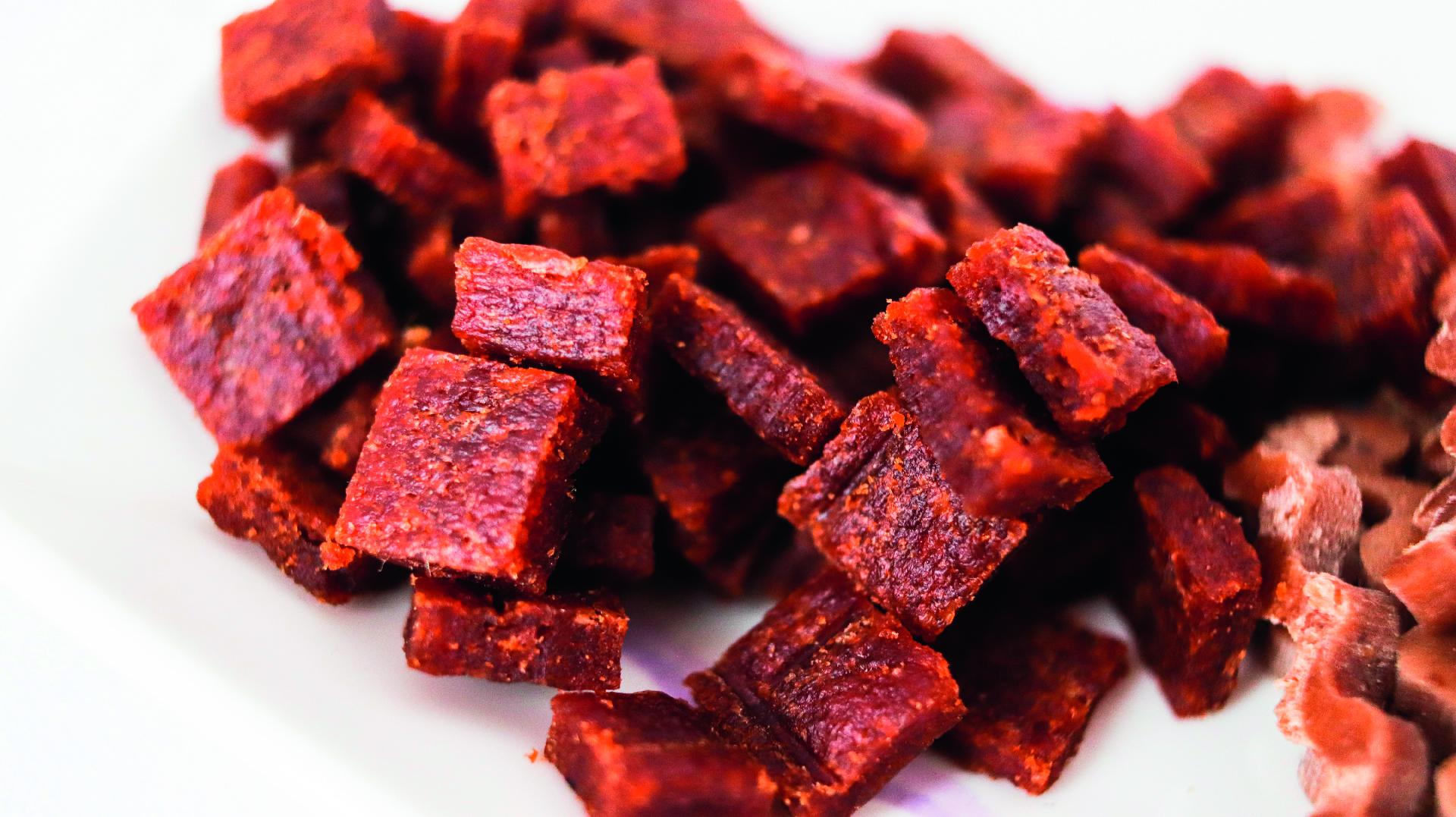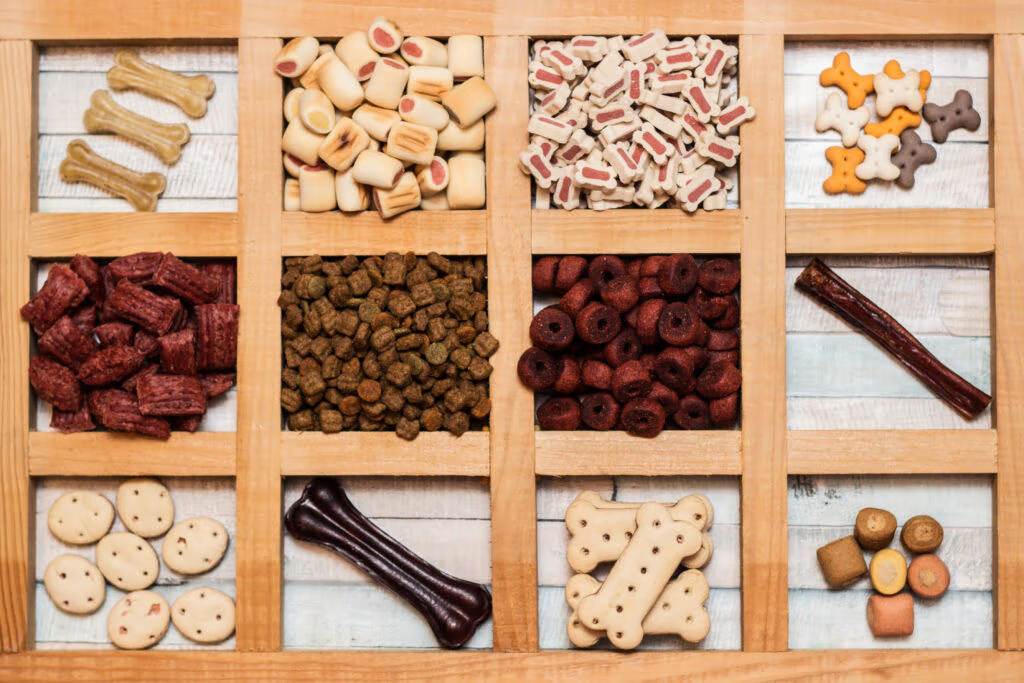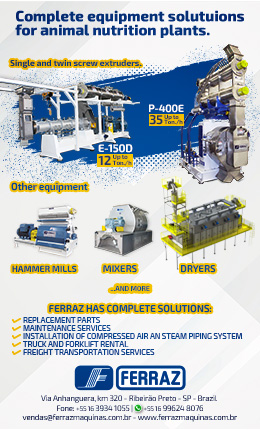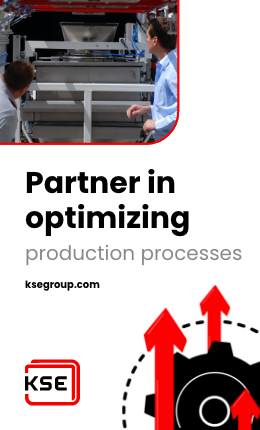Precision, a key factor in extrusion
Extrusion occupies a central place in pet food production, but it is not the only thing that matters: it does not make sense to focus exclusively on it if accurate and integral material and ingredient management is not achieved throughout the whole production process. Being the most common method of producing dry pet food, it involves several operations, such as mixing, heating, kneading, cutting, and shaping. Here the key is to obtain perfect homogeneous mixtures of the ingredients used in the formula.
Some criteria for an effective and successful process
Nutrition and extrusion
Nutritional quality is the main point, which is obvious but impossible to forget. The first and most important thing in a pet food formula must be nutrition, so the final product, regardless of the chosen production process, must be complete and balanced. With this in mind, one must consider how the selected ingredients react in the extrusion process. Depending on its nature, this can be easy or rather challenging.
Secondly, we can talk about product uniformity and texture. To pets, consumers and judges of our offers, product palatability is crucial, as no nutrient can nourish without good palatability.
Additives and binders
We can also mention additives as one more component of pet food formulas that can have various purposes. Some can be: guaranteeing longevity and food safety, maintaining texture and color, and preventing water activity, ingredient deterioration, and oxidation, among others. In addition, they are specially used to increase palatability and flavor, an important sensory characteristic for both dogs and cats. In fact, it's what defines whether or not the pet chooses our food. These can impact first-choice palatability, which means they make it the first food chosen or achieve a continuous choice effect, a preference sustained over time. These types of ingredients added to formulas are widely used. However, that does not exempt them from being controversial in a context in which those who make purchasing decisions prefer to know all the ingredients that their pet food contains and where this type of addition is increasingly rejected, often due to ignorance.
Marketing and sustainability
For the last couple of years, there are two additional points gaining more and more ground: marketing and sustainability. On the one hand, marketing is a crucial tool to get our product, with a great process and palatability, to reach the right hungry mouths. To design a great product to remain stored in our warehouses is completely pointless. And, on the other hand, considering (or not) the environmental impact can be, nowadays, one of the factors that take off or bury a brand's name. Today's consumers want to buy what takes care of everyone's future.
Different factors, some products, only one goal
Producers are deepening their research and experimentation to answer with the best possible quality to new market demands. Currently, we can summarize these needs in the following most significant challenges:
- Fresh refrigerated meat, neither frozen or dehydrated
- Higher quality – use of mechanically deboned skeletal muscle and primary organs, not by-products
- Unadulterated materials
- Non-traditional, grain-free, or alternative ingredient formulas
- More food shapes, like croutons or bone shapes, and not just brown and round
- Higher rates of meat inclusion (30-75%)
The truth is, with every new trend, new challenges arise. The greater inclusion of meat, for example, presents, from a manufacturing point of view, a challenge in terms of extrusion. But no matter how big the hurdle, staying on top of trends and meeting customer expectations is most important.
Conclusion
The improvement of production practices and, consequently, of the characteristics of final products depends on the processes chosen and the ingredients used. A crucial point, within a sea of innovative technology, attractive proposals, and emerging raw materials, is to remember, depending on the type of food produced, and determine what nutritional benefit we seek to achieve, either in a final product or with the addition of certain additional components.
As an industry, we must have the ability to review and attack challenges from all angles, and for successful development, we already know the keyword: innovation.
Looking carefully at the path traveled in recent times, we do not doubt that experts from various areas are working to improve and overcome any obstacles in terms of formulation requirements, hardware development, process controls, and specifications of a final product, with the objectives in mind of increasing productivity, minimizing costs, successfully satisfying our customers, maintaining the highest quality standards, eliminating human error, improving efficiency and optimizing security.
Source: All Pet Food Magazine
You could be interested: Wenger and Extru-Tech Jointly Unveil EXPRO AI Revolutionizing Extrusion Process Optimization with AI-Powered Insights
About author
María Candelaria CarbajoI’m a creative, interdisciplinary person, translator, and editor. I collaborate in producing and writing creative, high-impact projects to promote cultural exchange, transmit differential values, and connect with people/the audience. Likewise, I enjoy teamwork and joining forces, experiences, and knowledge to bring the world all the potential of those ideas that seek to impact people’s lives positively.

















































